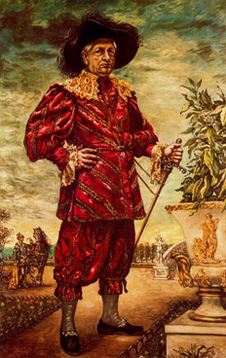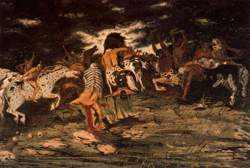James Thrall Soby, who was the first to write extensively on De Chirico, came very close to perceiving the mysterious connection between his early work and Pompeian wall-painting, before falling victim to the modernist campaigns that latter caused him to proclaim the artist a persona non grata and a victim of Neo-Classicism. The extent to which he was not a ‘victim’ but a fellow traveller in the world of classical ideas will be apparent when the implicit connections between his oeuvre and the ancient wall-paintings are outlined later in this essay. Soby came close to making the link between De Chirico’s early paintings and Pompeian wall-painting when he began to explore the artist’s often stated life-long admiration for the ‘magic realist’ painter Arnold Böcklin (1827-1901 ).
In his 1955 Monograph on the artist, Soby rhetorically questioned which Böcklin paintings did the young De Chirico admire most? He then quite rightly cited the paintings produced between the years 1864 and 1887. Unfortunately Soby did not realise the significance of this precise observation. In 1863 Böcklin made the first of several visits to the excavations at Pompeii and we know from the artist’s own words that his visits dramatically changed his approach to painting. His brooding Germanic landscapes were dramatically transformed into neo-classical reveries inspired by the mythological wall-paintings that he saw at Pompeii. Unlike the ancient originals his mythological beings became increasingly hyper-real. His sirens, centaurs and divine beings were depicted as though they were a magically real part of human existence (fig.2). Their assured meta-reality appealed to the young De Chirico who retained a lifelong sense of wonderment when looking at these paintings. Inspired by Böcklin, his earliest paintings incorporated similar mythological themes (fig.3-4).
 1
1 4
4 3
3